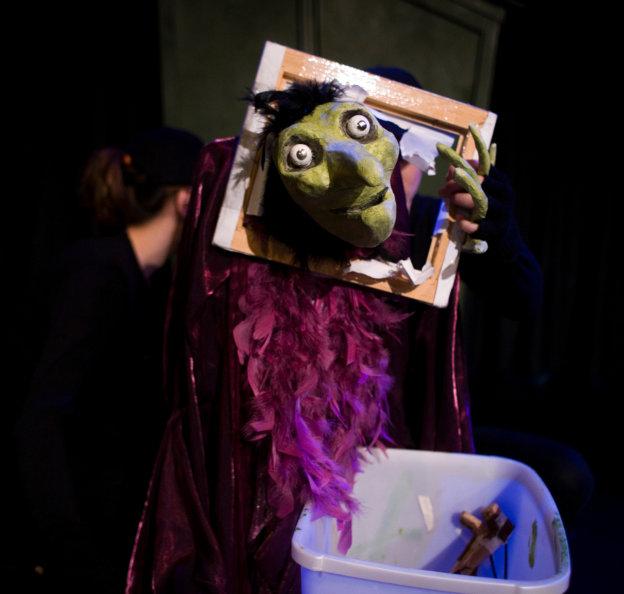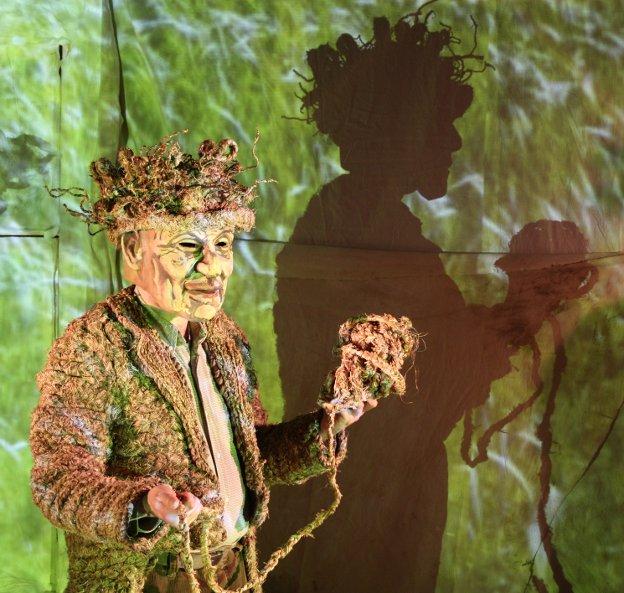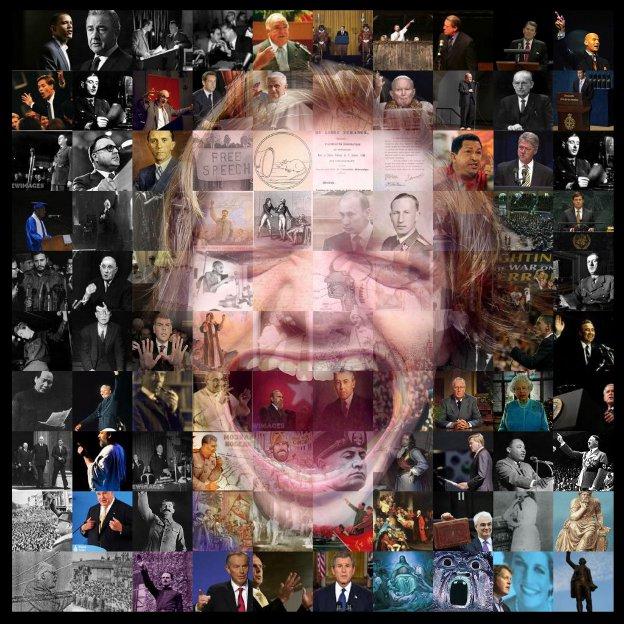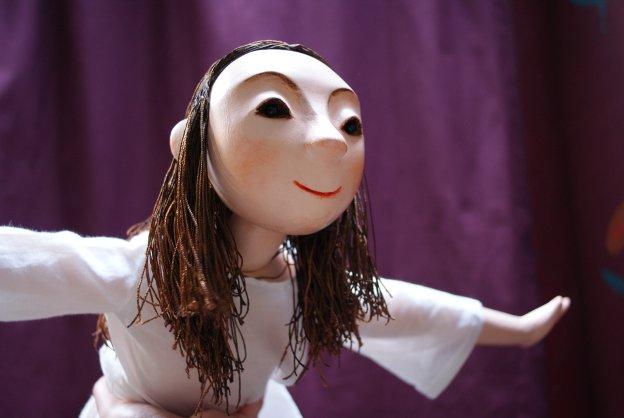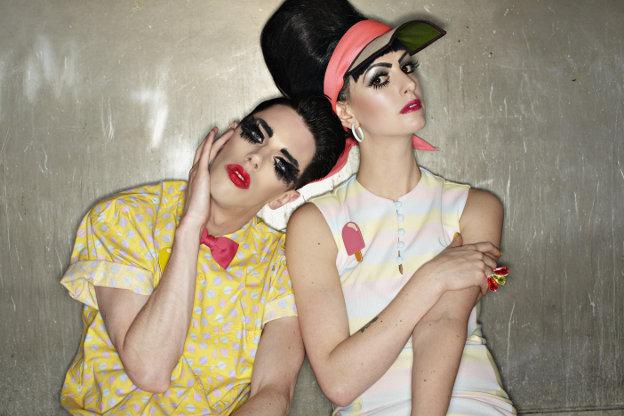Theatre Témoin and Cie. Traversière’s The Fantasist depicts the extremes of bipolar disorder as experienced by an institutionalised young woman rendered with conviction and physical virtuosity by the central performer. Well-structured as an engaging and coherent story, the piece still leaves plenty of space for interpretation, and contains enough elements of humour and inventive staging to keep firm hold of the attention. The opening scene shows the woman lying in bed as viewed from above, anxiously moving around, unable to settle. It is a well-known device, but here the technique and attention to detail create a highly convincing illusion, and this quality of application and ambition continues throughout the show.
Her delusional fantasies and shifting psychological states are represented in the form of puppet characters, particularly the erotic/abusive relationship she has with the mysterious Blue Man. An artist’s mannequin is brought to life as an extremely charming, impish child, and the grotesque heads of two raucous women prompt much laughter whilst effectively furthering the plot. Whilst there is scope to improve some of puppet mechanisms and techniques, their manipulation is well choreographed and performed with enjoyable gusto. The puppeteers also appear as human characters – a doctor and friend attempting to help the woman maintain her grip on reality. Through these dialogues we gain some added insights into her condition, but the stage naturalism is less accomplished than the more stylised, physical/visual work. A trippy, fragmented jazz soundtrack creates an atmosphere of menace and mental dissolution to complement the live action, and there are some wonderfully surreal scenes of artistic reverie when the character interacts with floating objects.
Whilst essentially tragic, the dynamism and invention of the production ensures it never becomes too depressing, but this perhaps also limits the depths to which it is emotionally moving. The narrative arc works its way to a final twist that almost turns it into a ghost story, which is neat but perhaps ends the show too quickly. Overall, however, the performance provided a rich and seamless experience clearly much appreciated by the sell-out audience, and should arouse positive interest in the company.

